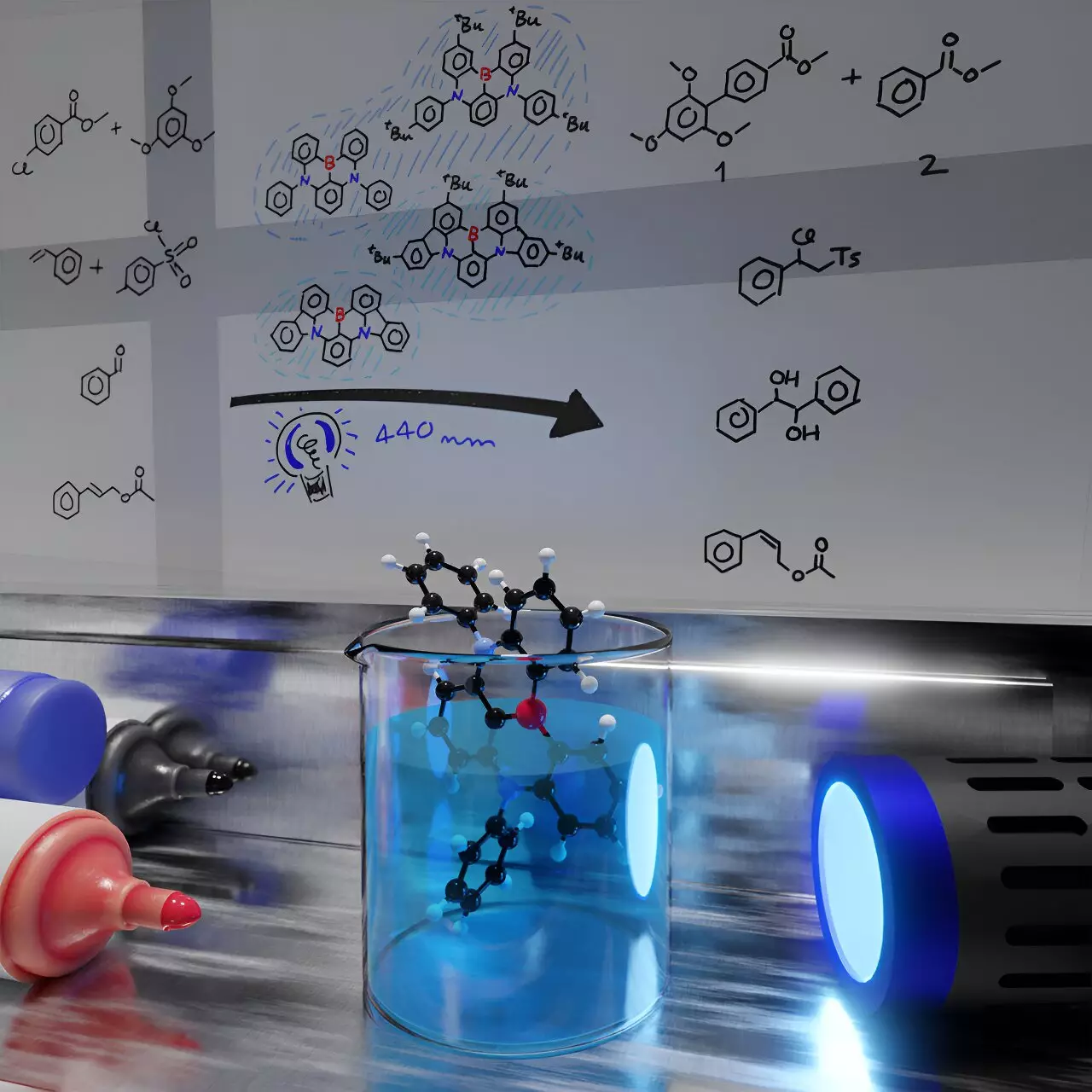The use of sustainable and affordable organic compounds as photocatalysts is gaining attention as a promising alternative to expensive metal photocatalysts. A recent report by scientists from the University of St Andrews highlights the potential of a family of four organic compounds as efficient replacements for traditional photocatalysts.
Traditional photocatalysts often contain metals such as ruthenium and iridium, which are scarce, costly, and toxic. These characteristics make them less desirable for use in industries like pharmaceuticals and agriculture. The need for viable alternatives to metal-based photocatalysts has become increasingly important in recent years.
Professor Eli Zysman-Colman and PhD student Lea Hämmerling conducted research on four boron- and nitrogen-containing multi-resonant thermally activated delayed fluorescence (MR-TADF) compounds. They found that these compounds exhibited strong absorption in the visible spectrum, were less sensitive to solvent polarity, and possessed electron-rich characteristics, making them highly suitable as photocatalysts.
In their study, Zysman-Colman and Hämmerling tested the organic compounds in various benchmark reactions, including pinacol coupling, dehalogenations, and E/Z isomerizations. The results showed that the MR-TADF compounds performed equally well, if not better, than commonly used metal-based photocatalysts. This demonstrates the potential of organic materials to serve as effective photocatalysts in a wide range of applications.
The research findings have significant implications for industries such as pharmaceuticals and agriculture, which rely on photocatalysts in their processes. By using sustainable organic compounds as photocatalysts, these industries can reduce the risk of trace metal contamination in their final products. This highlights the importance of exploring alternative materials for photocatalysis to meet the evolving needs of various sectors.
Zysman-Colman is actively involved in coordinating the PhotoReact Innovative Training Network, which brings together academia and industry to address the challenges associated with photocatalysis. This collaborative effort underscores the importance of interdisciplinary research in developing sustainable solutions for future applications of photocatalysts.
The research on organic compounds as photocatalysts presents a promising avenue for sustainable and cost-effective alternatives to metal-based photocatalysts. By leveraging the unique properties of organic materials, researchers are opening up new possibilities for diverse industries seeking efficient and environmentally friendly photocatalytic solutions.


Leave a Reply